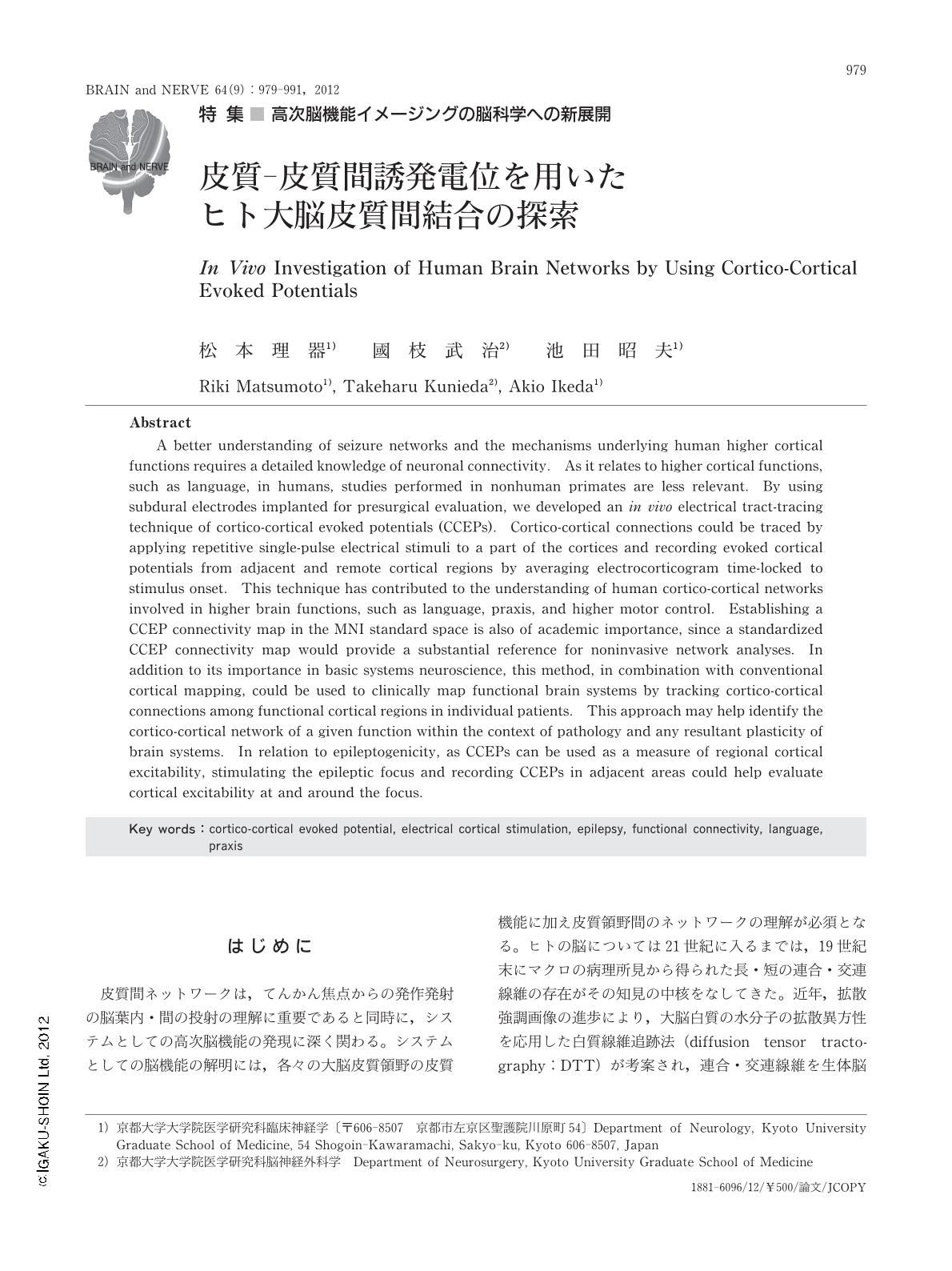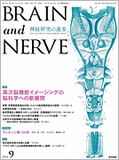Japanese
English
- 有料閲覧
- Abstract 文献概要
- 1ページ目 Look Inside
- 参考文献 Reference
はじめに
皮質間ネットワークは,てんかん焦点からの発作発射の脳葉内・間の投射の理解に重要であると同時に,システムとしての高次脳機能の発現に深く関わる。システムとしての脳機能の解明には,各々の大脳皮質領野の皮質機能に加え皮質領野間のネットワークの理解が必須となる。ヒトの脳については21世紀に入るまでは,19世紀末にマクロの病理所見から得られた長・短の連合・交連線維の存在がその知見の中核をなしてきた。近年,拡散強調画像の進歩により,大脳白質の水分子の拡散異方性を応用した白質線維追跡法(diffusion tensor tractography:DTT)が考案され,連合・交連線維を生体脳で可視化(“in vivo dissection”)することが可能となり,機能的脳神経外科の錐体路・弓状束の術前評価などに臨床応用されつつある1,2)。これはサルで用いられる侵襲的なトレーサーの手法によって得られる情報に匹敵する可能性を示す。
しかしこの方法では,皮質直下では線維が細くなり信号雑音比が低下するため,“tract”として同定された線維束を特定の皮質にまで追跡するのは困難であり,焦点皮質からのてんかん性放電の伝播様式や高次脳機能を担う皮質間ネットワークといった,特定の皮質領野間における皮質間結合の探索への応用には限界がある。筆者らは,てんかん外科の術前評価のために留置した硬膜下電極からの単発皮質電気刺激を用いて,皮質-皮質間伝播(cortico-cortical propagation)と判断される短潜時の誘発電位(皮質-皮質間誘発電位cortico-cortical evoked potential:CCEP)を隣接・遠隔皮質から記録することにより,皮質領野間のネットワークを機能的にin vivoで調べる手法を報告し,臨床応用してきた3,4)。単発皮質電気刺激は皮質間結合の同定法としてだけではなく,英国のAlarconら5)を中心にてんかん原性の評価にも応用が開始され,この10年の新たな侵襲的神経生理学的検査として注目されている。
本総説では,CCEPの方法,本手法による脳機能ネットワークの同定,てんかん焦点の興奮性の変容につき概説する。
Abstract
A better understanding of seizure networks and the mechanisms underlying human higher cortical functions requires a detailed knowledge of neuronal connectivity. As it relates to higher cortical functions, such as language, in humans, studies performed in nonhuman primates are less relevant. By using subdural electrodes implanted for presurgical evaluation, we developed an in vivo electrical tract-tracing technique of cortico-cortical evoked potentials (CCEPs). Cortico-cortical connections could be traced by applying repetitive single-pulse electrical stimuli to a part of the cortices and recording evoked cortical potentials from adjacent and remote cortical regions by averaging electrocorticogram time-locked to stimulus onset. This technique has contributed to the understanding of human cortico-cortical networks involved in higher brain functions, such as language, praxis, and higher motor control. Establishing a CCEP connectivity map in the MNI standard space is also of academic importance, since a standardized CCEP connectivity map would provide a substantial reference for noninvasive network analyses. In addition to its importance in basic systems neuroscience, this method, in combination with conventional cortical mapping, could be used to clinically map functional brain systems by tracking cortico-cortical connections among functional cortical regions in individual patients. This approach may help identify the cortico-cortical network of a given function within the context of pathology and any resultant plasticity of brain systems. In relation to epileptogenicity, as CCEPs can be used as a measure of regional cortical excitability, stimulating the epileptic focus and recording CCEPs in adjacent areas could help evaluate cortical excitability at and around the focus.

Copyright © 2012, Igaku-Shoin Ltd. All rights reserved.


